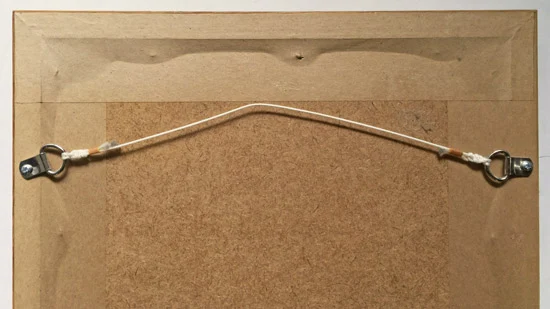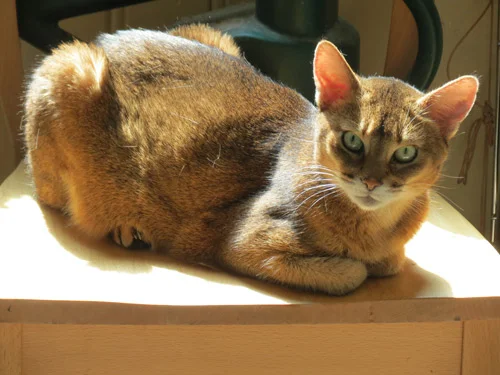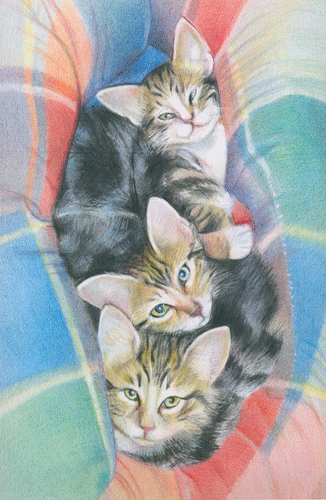A lot of the professional artists and other art business professionals (museums, galleries, publishers, suppliers etc) that I know are members of LinkedIn - which is a network designed for connecting professionals.
It characterises itself thus
the world's largest professional network with 300 million members in over 200 countries and territories around the globe
I'm a member - and
this is my public profile. If you're a member of LinkedIn and one of my 'connections' then you'll see a different profile. (
Please note as with all social media I only connect with people I know).
 |
| You can check out whether people view your profile! |
Changes at LinkedIn
LinkedIn is making some major changes at the moment. This post attempts to summarise some of these changes - because interestingly communication is not LinkedIn's strong point when it comes to managing change!
I've done a bit of research and it appears
the changes are being driven by the facts that:
- LinkedIn is a business and its shareholders would like to see a better return on its investment. (see Fortune: Here’s why LinkedIn’s shares are tanking today)
- LinkedIn Groups are running on what I consider to be antiquated software!
- the competition is getting serious. For example, Facebook for Business appears likely to get more serious about the business/professional side of 'making connections'. It could present some very serious competition to LinkedIn. (By way of comparison, this is LinkedIn's public Business Solutions page)
Below is my effort at trying to understand the changes which are being made to LinkedIn Groups.
LinkedIn Groups
If you're a member of LinkedIn, chances are that you'll be a member of some of the LinkedIn groups relevant to art AND be in blissful ignorance of what's going to start happening this week.
The changes to groups are probably happening this week. They were announced to those of us running groups five days ago.
The Groups team has been working on some really exciting new improvements that will change Groups dramatically, starting October 14th.
- The changes are being driven by the problems that have existed for a while with the way LinkedIn Groups are set up. For example - LinkedIn Groups have been magnets for spam by people who can't read or refuse to comply with the rules. I currently spend part of every day deleting spam or moving it out of the discussion area of the group I moderate.
- LinkedIn states that the changes being made are to promote engagement and are in response to what irritated people abotu groups and what people wanted to see change.
- Interestingly, those who manage and moderate groups have a different perspective.
- Many were clearly not consulted and are expressing some very serious concerns about the changes - specifically in relation to the control of spam.
- In addition, a number of the features which managers and moderators have been asking for to make their groups more effective are not part of the proposed changes.
Posts will change
They aim to make group posts more dynamic and interesting. Unlike at present, in future you will be able to:
- include an image in a post.
- This is welcome and will be of great interest to artists. However bear in mind you can already post images to LinkedIn by sharing an update, uploading an image or creating a post - from your dashboard. i know some artists who use this regularly - and others who either have no idea this funtionality exists or choose not to use it.
- I'll be interested to see how this impact on the speed of the site. As many of us know, those posting very large images can slow a forum to a standstill!
- mention another member of LinkedIn by name and html link and automatically signal to them that they have been referenced in a discussion. (Basically they seem to have copied the functionality already available on Facebook and which will be very familiar to those using Facebook.) This is a good move. It's very frustrating at present that linking to people is so very clumsy.
A new Groups app for iPhone and iPads
They aim to create more participation in Groups and to do this they needed to make Groups more accessible on the move. The existing app for LinkedIn generally gets a huge 1* rating in the Apple app store! It's very difficult to use LinkedIn Groups on the move and anything that improves the current situation is welcome.
- There is to be a new Groups iOS app - which is about time! I'll be taking a look at the app when it comes out.
- It will offer the scope for push notifications.
- It will be available in English speaking countries to start with.
- This should mean that people will be able to do more 'out and about' posting - however the promotional nature of that posting will very much depend on what each individual group allows
Obviously the movers and shakers are all perceived to be major users of Apple products - or maybe we're just more vocal! Android doesn't get an app as yet but apparently one will be available soon
Types of Groups changing
Going forward there will be only two types of Groups. This is the change which is causing most ripples with the Owner/Manager/Moderator community - mainly due to the loss of control over membership in the Standard Group and moderation of people commenting. Many are predicting a spamfest will occur.
- Standard - used to be known as 'Open'. As you might expect, historically these tended to generate a larger percentage of low-quality conversations
- Any member of a group can invite any of their 1st degree connections to join - and approve their membership. Many Owners/Managers/Moderators are characterising this change as the equivalent of a spammers' charter.
- The existence of Standard Groups will show up in search results (but not the conversations).
- You can probably expect to have some suggested to you.
- From a business perspective - this is the only way people will know you exist - but you will have minimal control over who posts and content.
- Unlisted - used to be known as 'Closed'.
- You won't know they exist unless you are 'connected' at 1st degree level to somebody on LinkedIn who is a member. That's because it cannot be identified via search and members cannot display the group on their profile, to members who don't belong to that group.
- Only the group's owner and manager can invite members to the group - or respond to a request to join from an invite sent.
- Participating in such groups does not offer either links juice or raise your profile in a wider community other than those visiting the group
- The option to make a group unlisted occurs only when the group is created.
- Members can join an Unlisted Group by invitation from the group owner or manager, or by requesting to join from an invite link sent to them.
- Common features of all Groups:
- all groups will be members only and only members can post in discussions
- all groups are now Private (i.e. conversations and comments are visible to group members only. The notion is that these are better quality if private.)
- discussions cannot be accessed by any search engine
- conversations will now be posted instantly to a group without the need for manager approval. This gives scope to spammers to post spam BEFORE they can be booted out of a group.
- Group owners, managers, and moderators can still remove off-topic conversations
- Members can still be put on moderation.
Bottom line a group will only be free from spam if members flag it and moderators are on it straight away.
I'm going to wait and see how the changes affect the group I moderate. At the moment moderation probably takes no more than 5 minutes per day. If the changes mean the group becomes less effective and/or the moderation more onerous, I've decided I will resign as Moderator and spend my time on my other projects.
It all boils down to how easy it is to control the spam. Unfortunately
LinkedIn does not have a good track record when it comes to controlling spam:
Virtually everyone who joins a LinkedIn Group is eventually hit with a deluge of spam.
It is possible to keep reasonable control over spam with scrutiny over membership and robust rules as to what can be posted. I'm really perplexed as to how relaxing the proactive controls on who can become a member and/or post can mean better control of spam (e.g. careful scrutiny of a profile to check fit with the ethos of the group). It seems to me that LinkedIn is expecting unpaid members and moderators to do it for them!
My expectation is that
a number of groups may now start to relocate to other platforms. I'd give it a month or so and then check in to see what it's like in the groups you belong to.
Removal of Promotions Tab
The Promotions Tab is being removed. In the group I moderate people are not allowed to drop unrelated links and/or promote themselves within Discussions. It works pretty well although that doesn't stop people trying - and posts get moved across to the promotions tab.
In future, I expect there will be a lot of deletions of posts happening - unless the LinkedIn Filters are effective at capturing them.
One thing is certain -
LinkedIn Groups are NOT going to be a place where people can promote themselves and their art in future.
Removal of SubGroups
Some groups have subgroups - and these will be converted into full blown groups
Rules changing within Groups
It's certainly the case that there's very likely to be a rewriting of the rules within Groups to accommodate the changes and the removal of the Promotions Tab.
Groups Highlights and Email Digests
LinkedIn revised their software recently to produce selective highlights for a digest. We've noted that this has reduced the level of activity as people think there is less going on.
More about Art Business and Marketing
You can find out more about Art Business and Marketing for Artists on my new website
Art Business Info for Artists
































